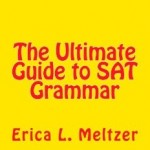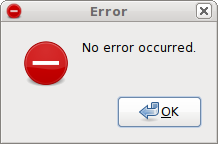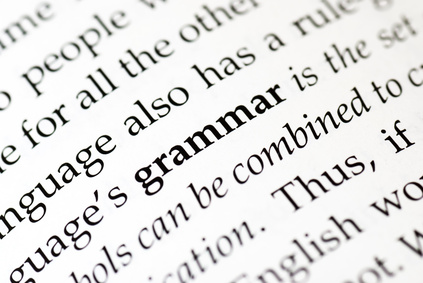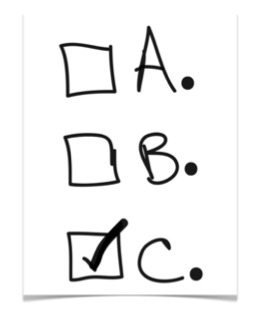The following SAT grammar lesson is an excerpt from my book SAT Grammar Crammer. Order your copy today and get a new high score on the SAT test!
Comma Splices: They are annoying, they are redundant, they should be destroyed.
Comma splices (frequently known as a “run-on sentences”) are part of a grammar rule that is tested multiple times on every SAT Writing test, so they definitely deserve our attention.
This is one of only a few lessons where we might have to get a little “grammar-y.”
Luckily, most of what we need to know for the SAT has already been covered in the chapter on Sentence Fragments. You can use that lesson to learn about the difference between independent and dependent clauses, and about what exactly goes into an “independent clause.”
“Comma splices” are a common SAT grammar mistake that arise when two independent clauses are “smooshed” together with only a comma between them. This simply isn’t strong enough “glue” to support the weld between two complete sentences.
Let’s look at an example of an existing comma splice grammar mistake:
“The table was large and heavy, John struggled to move it.”
Notice that on either side of the comma, there is a complete sentence/independent clause, each of which could stand on its own.
Get Exclusive SAT Prep Tips!
I want to send you more tips to help your SAT score, but I need your email address to stay in touch. Enter your email below so I can send you my reports on the SAT and other subscriber-only bonuses.
You can imagine each complete independent clause as being big and heavy; a comma is just a tiny little connecting pin, and with two heavy independent clauses on both sides of the comma, it will bend and break, since it’s unable to support such a heavy load on its own.
There are a few specific options about how to combine two complete ideas/independent clauses into one sentence. All of these options will show up frequently on the SAT Writing section, so be comfortable with all of them!
1) Use a comma with a coordinating conjunction after it (remember “FANBOYS?”)
2) Use a semicolon by itself
3) Use a semicolon followed by a continuing or contradicting word (like “indeed” or “however”)
Here’s a simple example we can use to practice combining two complete sentences with FANBOYS and a comma:
“The dog barked.” “The cat yowled.”
Comma-Splice Option 1: Use a comma and a FANBOYS conjunction:
FANBOYS is an acronym for the following conjunctions: “For, and, nor, but, or, yet, so.” The theme of these conjunctions is that they either demonstrate continuation or contradiction between two ideas, and they also can be used with a comma to “glue” two independent clauses together.
BAD; COMMA SPLICE: The dog barked, the cat yowled.
GOOD; FANBOYS+COMMA: “The dog barked, and the cat yowled.” “The dog barked, but the cat yowled.”
Comma-Splice Option 2: Use a semicolon by itself:
The semicolon is my favorite punctuation mark. It’s highly versatile, but let’s focus on just one common use: combining independent sentences without creating a comma splice error.
Anywhere you can use a period, you can technically use a semicolon. The main difference is the semicolon implies that there’s some logical connection between the sentences on either side of it, whereas a period implies no such connection.
It is as simple as that – here’s that cat/dog example using option 2:
GOOD SEMICOLON USAGE, NO COMMA SPLICE: The dog barked; the cat yowled.”
Comma-Splice Option 3: Use a semicolon with a continuing or contradicting word:
This option is great if you want to use Option 2, but feel the need to add a little more clarity so that the logic of the sentence is clear.
The idea is to combine two complete sentences/independent clauses with a semicolon and then add a word like “however” or “therefore” to improve the clarity.
GOOD SEMICOLON + CONTRADICTING WORD: “The dog barked; however, the cat yowled.”’
It’s pretty much the same as option 2; it just saves the reader a little thinking by making the logical contradiction between the two ideas even more clear.
To get the complete text of this SAT Writing and Grammar lesson, along with more than 14 other lessons, two diagnostic tests and over two hundred SAT Writing practice questions, purchase your copy of The Top 12 SAT Writing Grammar Rules today!
Further Reading:
What exactly is on the SAT Writing Test?
SAT Writing Rules: Subject-Verb Agreement
SAT Writing Rules: Sentence Fragments
SAT Writing Rules: Conjunctions
Additional Resources:
SAT Grammar Crammer: Top 12 SAT Writing Rules (e-Book)

















Find Me on Social Media